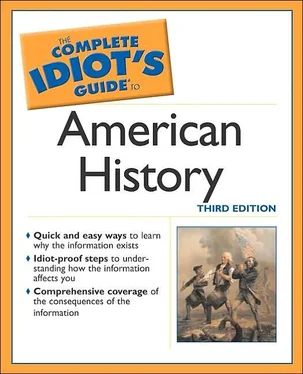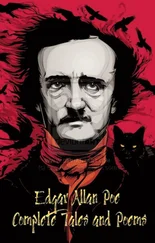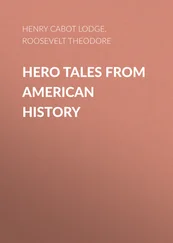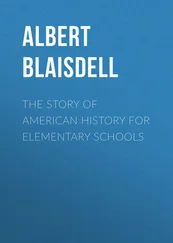Paris Accords and the Fall of Saigon
On January 31, 1973, the United States and North Vietnam signed the Paris Accords, which brought U.S. withdrawal and the return of the POWs, some of whom had been languishing in North Vietnamese prisons for nearly a decade. A four-party Joint Military Commission and an International Commission of Control and Supervision supervised the cease-fire. However, the Nixon administration continued to send massive amounts of aid to the Thieu government, and both the North and South freely violated the accords. To pressure the North into abiding by them, the United States resumed bombing Cambodia and menaced North Vietnam with reconnaissance overflights.
But a war-weary Congress had turned against the president, whose administration (as you shall see in the next chapter) was now wallowing and disintegrating in the Watergate Scandal. In November 1973, Congress passed the War Powers Act, which required the president to inform Congress within 48 hours of deployment of U.S. military forces abroad; the act also mandated the forces’ withdrawal within 60 days if Congress did not approve. In 1.974, U.S. aid to South Vietnam was reduced from $2.56 billion to $907 million, and to $700 million in 1975.
What hopes Thieu held out for support from the Nixon administration were dashed when the U.S. president, facing impeachment, resigned in August 1974. Beginning in early 1975, the dispirited South suffered one military defeat after another. After Congress rejected President Gerald Ford’s request for $300 million in supplemental aid to South Vietnam, Nguyen Van Thieu hurriedly resigned his office. He left the leadership of his nation to Duong Van Minh, whose single official act was unconditional surrender to the North on April 30, 1975. A dramatic, frenzied evacuation of Americans remaining in Vietnam followed. The spectacle of U.S. personnel being airlifted by helicopter from the roof of the U.S. embassy in Saigon was humiliating and heartbreaking. At the cost of over $150 billion and 58,000 Americans killed, the Vietnam War had ended in defeat for South Vietnam and (as many saw it) for the United States as well.
The Least You Need to Know
U.S. involvement in the Vietnam War was an extreme result of the Cold War policy of the “containment” of communism.
The Vietnam War was the most unpopular and divisive war in American history, wrecking the grand social programs of Lyndon Johnson and badly undermining popular faith in the federal government and the nation’s leaders.
In 1965, 75,000 Americans were fighting in Vietnam. In 1966, the number jumped to 375,000, and to half a million by 1968.
The most visible and violent “confrontation” of the 1960s took place August 26-29, 1968, in Chicago, during the Democratic National Convention. Earlier, on March 31, 1968, President Johnson had announced to a stunned nation that he would not run for reelection. However, probably the most electable antiwar candidate, Robert F. Kennedy, was assassinated on June 6, following his victory in the California primary. Hubert H. Humphrey then became the most likely candidate, and he did not oppose the war. Some 10,000 individuals massed in Grant and Lincoln parks along Chicago’s lakefront to protest the war, to protest the nomination of Humphrey (Dump the Hump!” they chanted), and to vent rage against Chicago mayor and Democratic ‘boss” Richard J. Daley, whom they as a racist and even a fascist.
The object of the Nixon—Kissin diplomacy was to achieve detente with the Soviet Union and China, a condition of increased diplomatic, commercial, and cultural contact designed to reduce tensions.
On March 16, 1968, a U.S. infantry company commanded by Lieutenant William L. Calley marched into the South Vietnamese hamlet of My Lai, supposedly a Viet Cong sanctuary/stronghold. The company massacred 347 unarmed civilians, including women, old men, and children, some of whom were herded into ditches and shot. The grisly scenes were recorded by army photographers.
The “My Lai Incident” was not made public until 1969, and then only through the efforts of Vietnam veteran Ronald Ridenhour, who threatened to go to the media with what he had heard about the massacre if the U.S. Army failed to initiate an inquiry. That proceeding resulted in the court martial of several soldiers, of whom only Calley was convicted on March 29, 1971.
For many Americans, My Lai symbolized the essential brutality of the Vietnam War, a conflict in which the defenders of democracy were seen as slaughterers of innocent women and children. As to Calley, some people saw him as likewise a victim, thrust into a war in which everyone was a potential enemy. Sentenced to life imprisonment, Calley was released in September 1974 when a federal court overturned the conviction.
Officers who ordered their men into dangerous situations risked fragging –that is, assassination by their own troops—typically by fragmentation grenade.
Of Love, the Moon, and Dirty Tricks
(1968-1974)
In This Chapter
The counterculture movement
Landing of Apollo 11 on the moon
Nixon’s foreign-policy breakthroughs
Crisis of national trust: Pentagon Papers and Watergate
Who were the victims of the Vietnam War? Two, perhaps three million Indochinese died, and 58,000 American lives were lost. Many thousands more were wounded, some disabled for life. U.S. Vietnam veterans were not welcomed home with parades but were looked on with guilt and suspicion. By some Americans, veterans were seen as “baby killers”; by others, they were regarded as damaged goods—young men who may have escaped physical wounds but who bore psychological scars that made adjustment to civilian life difficult if not impossible.
The fact is that all America was a victim of the war, which had created a rift—to use a term from the era, a credibility gap—between citizens and government. Vietnam killed human beings, and it also killed trust.
Tune In, Turn On, Drop Out
Since the early 20th century, illegal drug abuse had been associated with the fringes of society, with desperate and disturbed individuals, and to some extent, with urban African-Americans. By the 1950s, addiction to such narcotics as heroin was becoming a major and highly visible problem in many American cities and was linked to the increasing incidence of violent street crime, Yet drug use was still far from a mainstream affliction.
This all changed by the mid 1960s. A new generation of middle-class youth, characterized by relative affluence and the advantages of education, became passionately dedicated to forms of music and other types of popular art that expressed a turning away from much that had been accepted as the American dream: material prosperity, a successful career, a happy marriage, a house set amid a green lawn and surrounded by a white picket fence. Youngsters craved the experience of new music (a development of the rock ‘n’ roll that had started in the 1950s) and new clothing—colorful, wild, casual, sometimes evoking the bygone world of British Edwardian extravagance and sometimes suggesting the realm of that ultimate thorn in the side of the American dream, the hobo. As they looked with distrust on their elders (“anyone over thirty”), 1960s youth indulged in so-called recreational drugs. True, previous generations had had their overindulgences, especially alcohol, but for many of those coming of age in the 1960s, drugs became an integral part of everyday life.
Читать дальше












